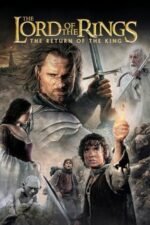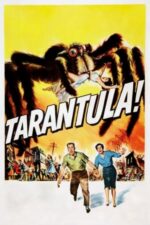Eight Legs and Existential Dread: Why Giant Spiders Keep Crawling Back Into Our Nightmares
Okay, let’s talk about giant spiders. Not just your run-of-the-mill daddy long legs (which, by the way, aren't actually spiders – a whole other fascinating tangent!), but the colossal, often mutated, and invariably terrifying arachnids that populate our screens. It’s a recurring motif in genre cinema, and I think it speaks to something pretty deep about our anxieties.
Why spiders? Well, they’re already creepy for many of us. They're associated with darkness, webs – traps! – and a certain unsettling otherness. Shrink them down to human size (or bigger!), add some glowing eyes and a hunger for destruction, and you’ve got yourself a potent symbol of the unknown, the uncontrollable, and our own vulnerability.
Think about The Spider - that film's premise is classic monster movie stuff: small town, ordinary people facing an extraordinary threat. It taps into that primal fear of something lurking just beyond the familiar, ready to pounce. The fact that it’s teenagers and a teacher banding together? That’s a nice touch too – highlighting resilience and community in the face of overwhelming odds. We see echoes of this in The Black Scorpion, where the sheer scale of the creatures is meant to inspire awe alongside dread. It's not just about being scared; it's about feeling utterly insignificant against something so immense.
But it’s more than just simple scares, isn’t it? The giant spider often represents a societal fear – pollution, unchecked scientific experimentation (as hinted at in The Spider), or even the consequences of our own hubris. Journey to the Seventh Planet, with its brain conjuring illusions, takes this further; the spider becomes a manifestation of psychological terror, blurring the lines between reality and nightmare. It’s less about physical threat and more about losing your grip on sanity – which is arguably far scarier.
And then there's something wonderfully bizarre in Ishiro Honda’s All Monsters Attack. It’s part monster movie, part coming-of-age story, and the giant Minilla (a baby Godzilla) becomes a symbol of Ichiro’s longing for acceptance and escape from his difficult life. It's a surprisingly tender exploration of loneliness and finding solace in fantastical worlds – even if those worlds are populated by oversized creatures!
The recurring presence of these eight-legged behemoths across decades of film speaks to their enduring power as symbols. They’re adaptable, too; they can be sci-fi horrors, ecological warnings, or even surprisingly poignant metaphors for childhood trauma. Creep Encounters, with its alien parasites and desperate teachers, takes the concept into a modern, action-packed context – proving that giant spiders (or their equivalents) still have plenty of bite!
So, next time you’re looking for something to watch that will genuinely get under your skin, consider revisiting these films. They're not just about jump scares; they're about confronting our deepest fears and finding strength in the face of the monstrous – both real and imagined. And who knows? Maybe you’ll even gain a newfound appreciation for those tiny spiders spinning webs outside your window… maybe.






































